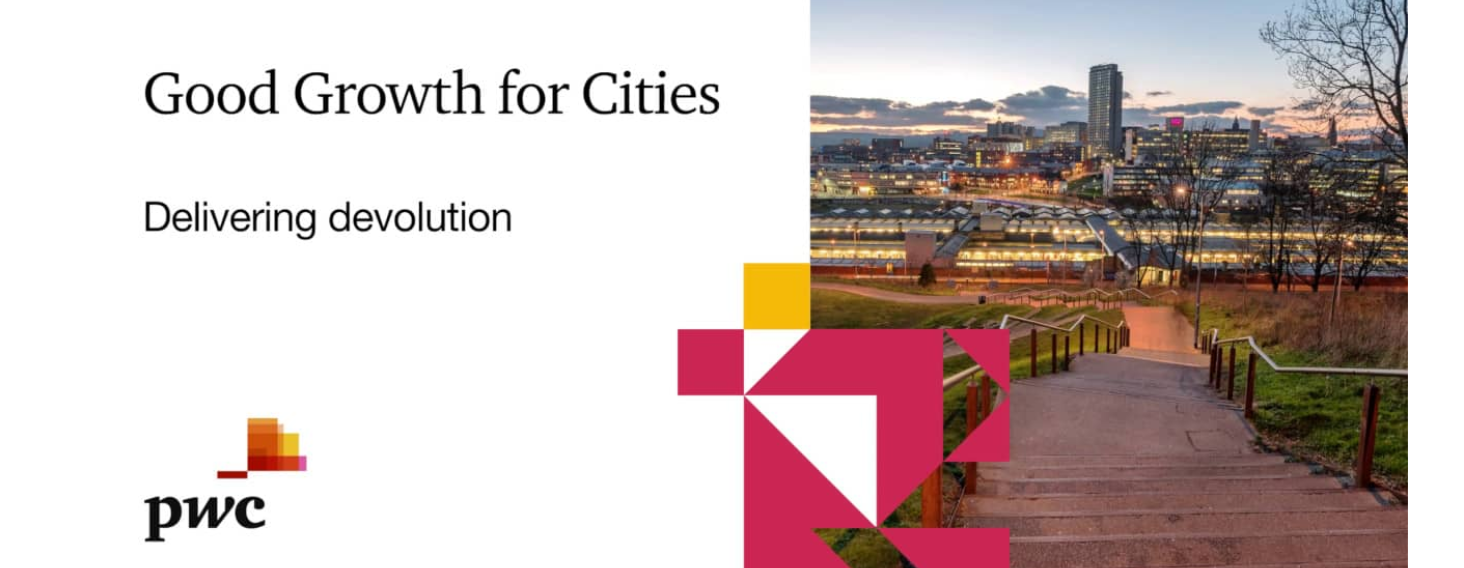Southampton is the highest performing city in the South East, according to the latest PwC-Demos Good Growth for Cities Index, moving up by two places from last year to third out of 51. While Medway is the lowest ranking city in the region, it has jumped four places to 36th compared to last year’s Index.
Oxford has experienced one of the most significant changes within the UK, moving from last year’s top performing city to 10th in the 2024 ranking. This change is predominantly driven by worsening scores in three key metrics: income distribution, work-life balance, and safety. However, eight of the 12 economic indicators in Oxford still score above the UK average, including safety, income, and skills.
The Index ranks 51 of the UK’s largest cities (generally considered those with populations of at least 350,000 people), plus the London boroughs as a whole, based on the public’s assessment of 12 economic measures, including jobs, health, income, safety and skills, as well as work-life balance, housing, travel-to-work times, income equality, high street shops, environment and business startups.
Based on these public priorities for growth, the South East tends to perform above the national average, with the exception of Medway, High Wycombe and Aylesbury.
As a whole, the eight cities in the South East perform at or above average on health, skills, and environment. Seven of the eight cities in the South East score above the UK average on health and on skills among 16-24 year olds.
All South East cities in the Index perform poorly on house price to earnings, scoring lower than the UK average. Analysis in the Index shows the performance on house price-to-earnings ratio saw the largest decline across UK cities from last year’s Index, as people continue to be priced out of living in cities as wage growth fails to keep pace with house prices.
As the national picture shows, the public are focused on financial wellbeing, with people in the South East placing income as the highest priority compared to the UK average. However, the environment, safety, and work-life balance are seen as less important factors compared to the UK average.
South East’s economic growth rate in 2024 and 2025
Of the 12 regions included in the latest Good Growth for Cities Index, the South East is expected to have the third strongest economic growth in 2024 and fourth strongest economic growth in 2025, with growth in the region forecast to be stronger than the UK average in both years.
Economic activity in the region is forecast to grow by 1.1% in 2024 and 1.9% in 2025, surpassing the UK average of 1.0% and 1.7%, respectively. This growth is driven by strong performances in cities like Portsmouth and Reading, which are forecasted to rank 6th and 10th in 2024, and 16th and 4th in 2025. All eight cities in the region are expected to meet or exceed the UK average growth by 2025.
Strong economic growth is driven by notable economic activity in thriving industries, particularly the high levels of professional, scientific, and technical activities in Oxford and Reading. The region also has substantial economic activity in real estate, wholesale and retail trade ( repair of motor vehicles). Additionally, cities in the South East have a higher proportion of activity in agriculture, mining, electricity, gas, water, and waste industries. Due to this varied sectoral make up of cities within the region, there are no sectors for which economic activity is notably lower than the UK average.
Julian Gray, Regional Market Leader for PwC South East, says:
“The results for cities in the South East in the latest Good Growth for Cities report are wide-ranging, with some cities moving up in this year’s ranking, like Southampton and Reading, while others, such as Oxford, have noticeably fallen. Despite these variations, it’s encouraging to see that most of the cities are still ranked in the top 20 of the 51 Good Growth cities. The analysis also shows that we still have opportunities for improvement in next year’s rankings. One area for potential improvement is the house price to earnings ratio, where all cities in the South East score lower than the UK average.
“Due to the South East’s geographical location, strong performance on certain Index indicators, and the varied sectoral makeup of its cities, the region is predicted to experience strong economic growth over the next two years. This suggests that robust social, environmental, and economic performance can pave the way for substantial economic growth in the future.
“The South East’s strong performance on skills and other key indicators in the Index is a positive sign for our future. Our public and private sector organisations need to continue working closely with devolved and national governments to attract talent, nurture skills, and address local needs. This collaboration will create an economy where new businesses can thrive.”

